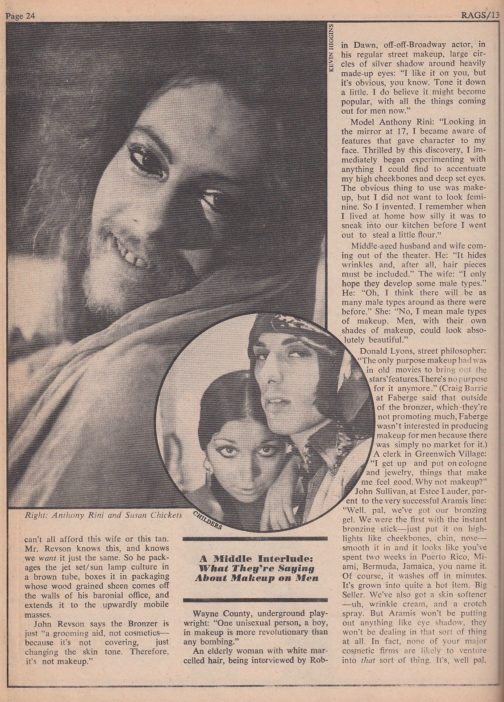“Hair, makeup, like styles of clothes have no gender. Today people have different ideas of what the Revolution is. It means freeing ones head as well as political prisoners.”
In this case, “freeing ones head,” involves freeing oneself from the social construct of gender and the way it confines one’s appearance. The above Rags article features an image of a man with long natural hair, smiling through heavy kohl eyeliner and eyeshadow. The accompanying passage is entitled “A Middle Interlude: What’s They’re Saying About Makeup on Men.” But from the perspective of this article, who is they?
They seems to be the people of the streets of San Francisco: a young male model, a theater actor, a “street philosopher,” and various pedestrians around the city were asked to speak about the potential of makeup for men. Given the great changes that men’s appearances had undergone at the time, with new forms of dress, facial hair and hairstyles, many San Francisco locals echoed the sentiment that “Men, with their own shades of makeup could look absolutely beautiful.” This eloquent idea was expressed by a woman who was interviewed on her way out of the movie theater. Young San Francisco model at the time, Anthony Rini, told Rags that as a man, he wanted to accentuate his features but this didn’t and shouldn’t mean he wanted to look feminine. The article begs the question: why should enhancing one’s appearance be limited to only women?
“It couldn’t do any harm to the masculine image” states Rags. And yet, the act of men wearing makeup holds a great subversive power because from the perspective of the heterosexual dominant culture, dismantling the construct of gendered appearance begins to dismantle the social construct of gender itself.
